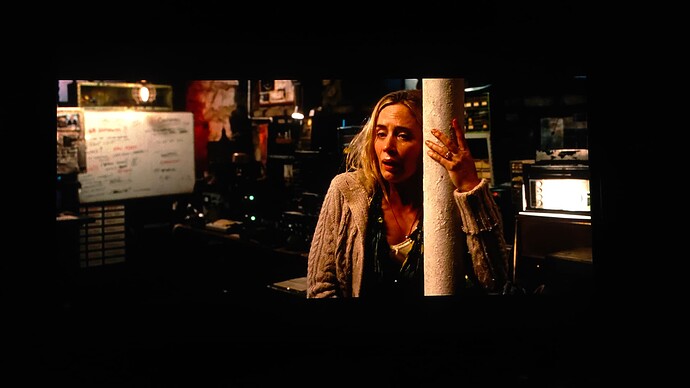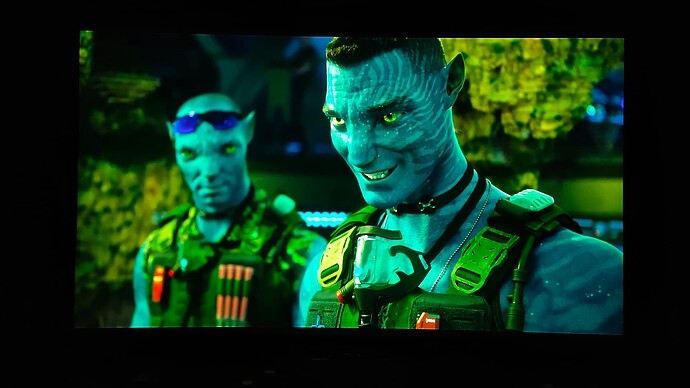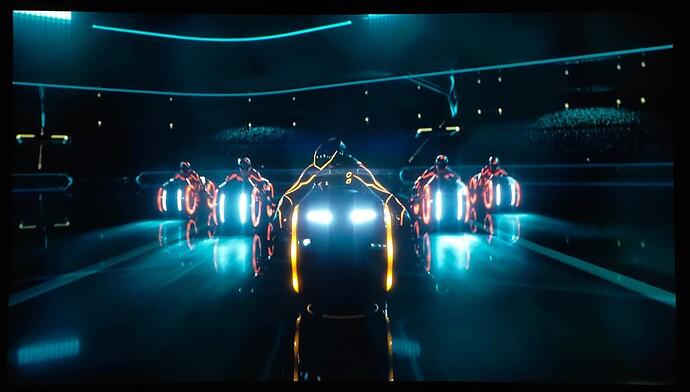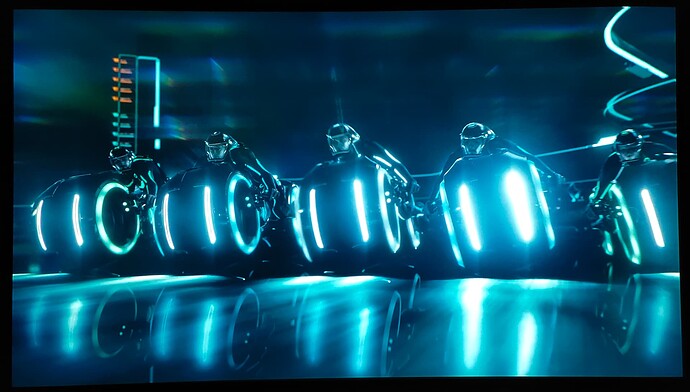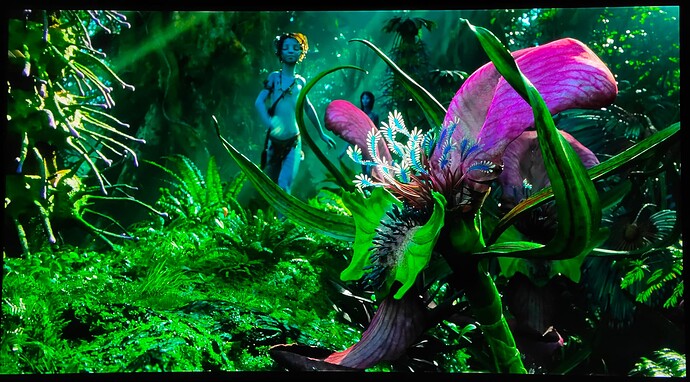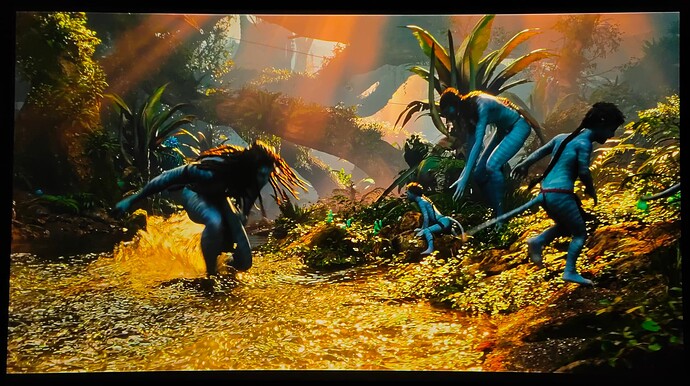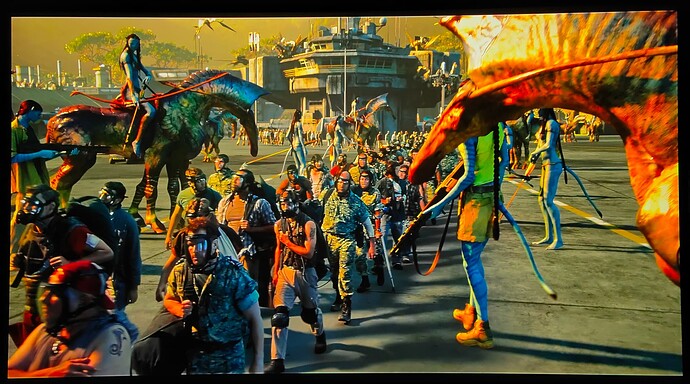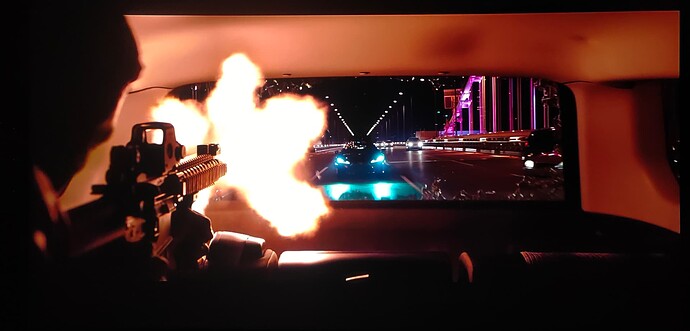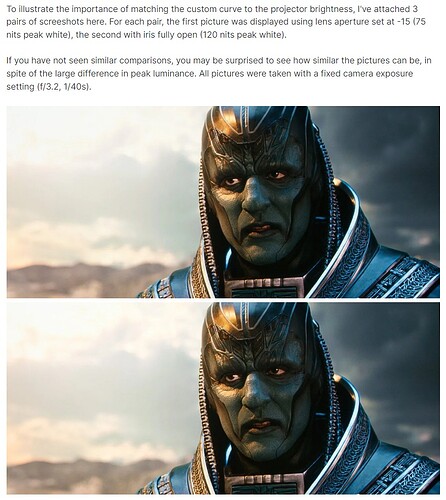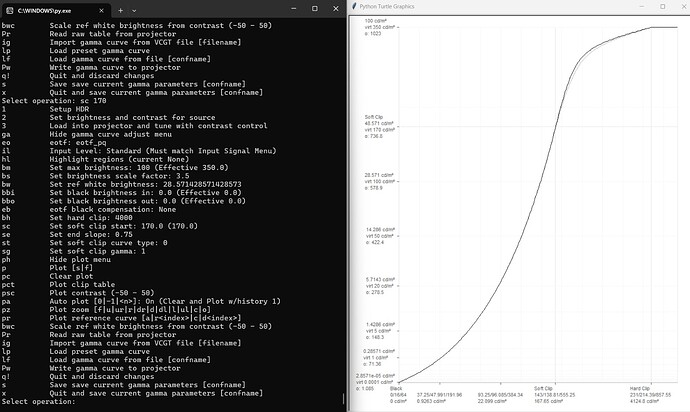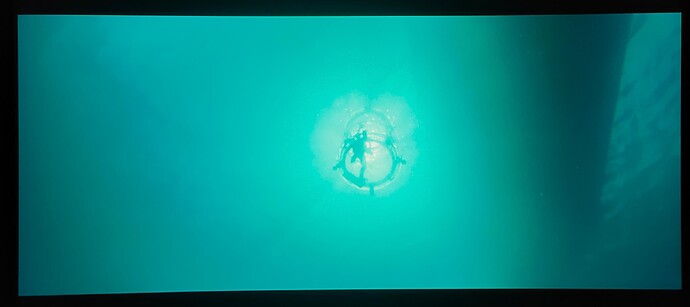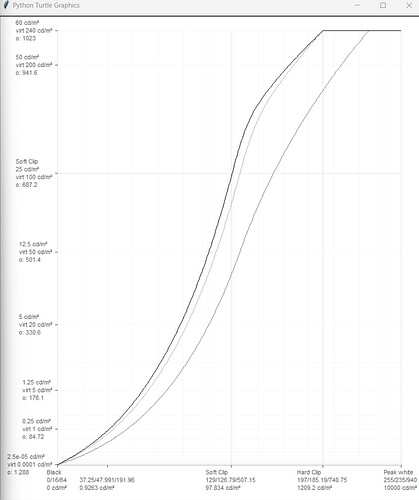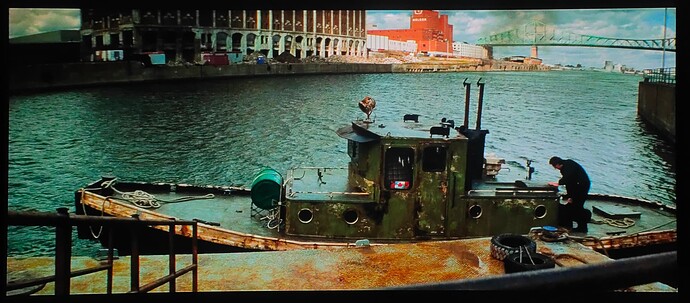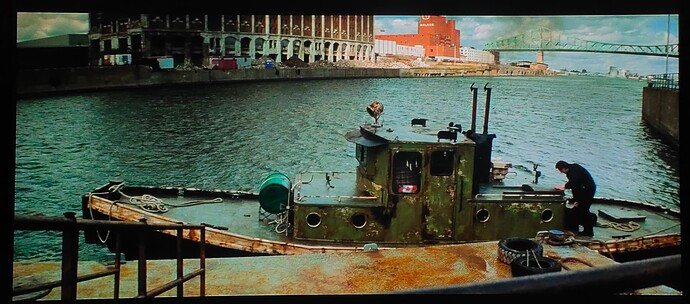I’ve been playing around with the Arve custom gamma tool. It gives a lot of flexibility to customise the tone curve, albeit fixed.
This is showing one of the default 4000nits curve, that one can fine tune.
There are 3 slots for custom curve on my old JVC.
I’m fine tuning 3 custom curve.
1st top bright curve, for those movies that just look dim and need a bit more punch and pop. Or certain darker scenes, just switch to this curve for a brighter image. Eg black panther intro jungle scene. Good green tones on the vehicles, and the dirt road is a good brown tone.
2nd, middle is the default curve for majority of content mastered at 1000nits. Good balance of bright image, good pop and punch, without clipping highlights.
3rd, bottom is for those very bright movie, basically mastered at 4000nits. Tend to be blown highlights like the Meg, aquaman.
The diving cage scene from The Meg
This is an earlier plot from testing. The middle default curve I ended up dropping it a bit more from the top bright curve.
I switched zidoo edid back to 1000nits, and this combo has been working really well in my testing and viewing.
This 1000nits edid then I find, works very well with the default JVC st 2084 HDR gamma curve as well.
I can adjust picture tone for a brighter and darker image, to match the 3 custom curves. And even go brighter, or dimmer, for those occasional outlier content.
This is how the adjustments work. You can see how it looks similar shape to the custom curves
Finally, just an example from the movie I was watching last night. Old movie The Score, Robert de Niro, Edward Norton.
It looked a bit dim still with my bright curve, so I used the HDR curve and bumped the pic tone a bit more.
The first one is the HDR curve, with a bit brighter presentation. Nowadays I’m paranoid to look for color clipping when pushing the image brighter. Maybe a bit more of the sea is clipped highlights, but that is rather benign. The red building in the horizon actually looks more red and more bright. If color is clipped, it would look less saturated as color clipped.
Custom 1 bright curve.
Generally, I found the JVC st 2084 curve to be more contrasty, meaning brighter brightness and darker darks. The details and definition also look more pop and punch. Dunno how JVC does it.
When AB compare with custom curve, the HDR curve will look ‘better’ and ‘preferred’ to the eye. But what I also found is the higher contrast can cause eye fatigue. The custom curve presents a more balanced look, that still has good pop and punch, but also more relaxed for the eyes.
Between the zidoo edid and the custom curves, I seem to be able to get a good looking bright image across variety of material. Without having to go the path of external video processing.
As they say, ignorance is bliss. Will continue to tweak, explore and understand the limits of this approach.

